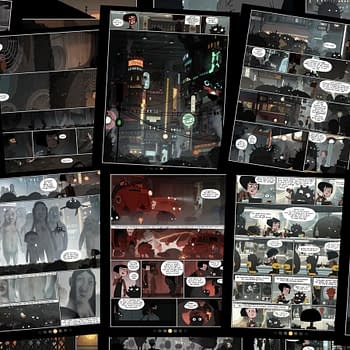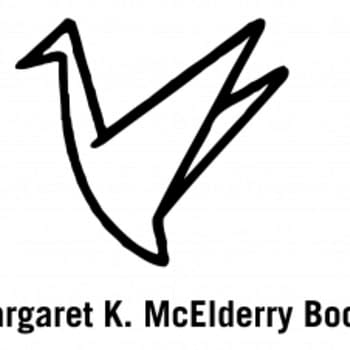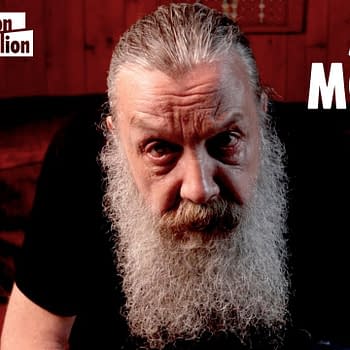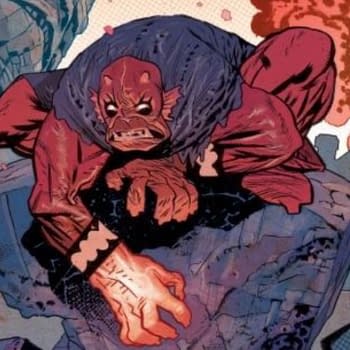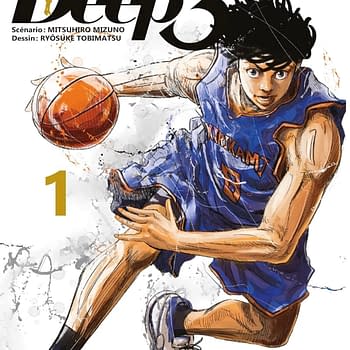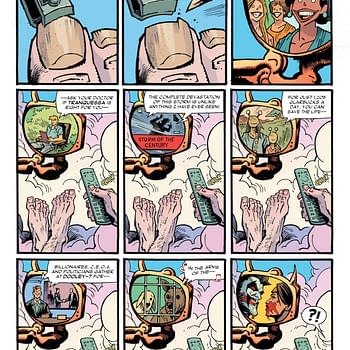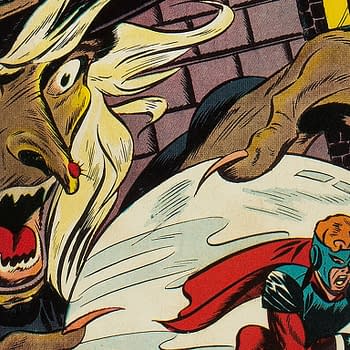Posted in: Comics | Tagged: Bryan k Vaughan, fiona staples, image, saga
Why We Are Going To Be Even More Obsessed With Saga Ten Years From Now

The vast majority of people who read a single issue of Saga, by Brian K. Vaughan and Fiona Staples, continue reading it. And if they keep reading it, they usually morph into die-hard fans who suffering the torments of hell waiting for the issue "chapters" to come out over time. This is not news- the overwhelming support for Saga is everywhere you look on comics news sites and even in the burgeoning field of comics scholarship. But despite the critical and popular acclaim the series has received, with 2013's "Best Continuing Story" and "Best New Series" Eisner Awards conferred on it, it's difficult to come up with a consensus about why it is such an appealing comic.
And that's ok. People put their money where their mouth is and buy the comic, and keep it going, and awarding bodies give it the nod that it deserves. It would be nice, though, if discussion of Saga moved well past the "fad" phase of acclaim and into the more serious conversation at hand. Saga is a landmark series that changes things and we need to start looking at the specific impact that it is having and will continue to have on comics storytelling. Here are a few things about Saga to start that conversation more fully, things that we are likely to look back on 10 years, or even 5 years from now, and say, "That couldn't have happened without Saga getting there first".

In this way, Brian K. Vaughan's writing on Saga is exactly like some of the best and most popular work by Terry Pratchett and Douglas Adams. What they get away with in prose, and the way that they dazzle and amuse readers, Saga gets away with in comics. Some comics creators feel that every single operative universe of a new comic world needs to be firmly defined in the first few pages of a comic like a life-line for readers to hold onto. Something they can trust in that keeps them from losing their way or their interest. Saga isn't interested in keeping you comfortable in that way, but would prefer that you choose to free-fall, and trusts, instead, in the reader to make that leap. It inspires a desire for adventure in readers. And that, in turn, frees up Vaughan to turn over what is in many ways an endless variety of possible surprises without having to act apologetic about it and burden the narrative with excessive explanation.
Secondly, Saga is told as a retrospective history which legitimizes its strangeness. Vaughan doesn't plunge the reader into free-fall willy nilly. Rashness like that without attention to some necessary guideposts in telling a story results in an ambitious but difficult comic for readers to stick with. Instead, Vaughan employs the time-honored tradition of the narrator-guide. In this case Hazel, jumping in with often poetic and poignant commentary in a limited fashion, telling the story of her parents' lives and her own.

Thirdly, the artwork on Saga is ethereal and yet incredibly muscular and active. Possibly, this should have been listed as a "firstly". Everyone I've spoken to talks about the artwork first when raving about Saga, so why is it that the artwork by Fiona Staples seems to receive the least critical attention? The secondary reaction to the Eisner Awards, after Saga had taken so many honors, including Best Writer for Brian K. Vaughan, was a kind of perplexity over why Fiona Staples hadn't been nominated more specifically for awards. Now, there were many excellent books both nominated for and awarded Eisners this year, so Staples' artwork wasn't the only deserving subject, but something still seems a little out of balance when it comes to acknowledging what she has achieved, visually, on Saga.
It's not a stretch to say that other artists might have failed where Staples succeeds in telling such an odd-ball, expectation-defying and planet-hopping story through art. Even seasoned artists might have failed to even hold the story together visually for the reader. But even if other artists could have succeeded in drawing and coloring Saga as a slightly different kind of story, what Staples creates in her art is so astonishingly similar to what Vaughan is trying to achieve through his writing that this combination is certainly what fans are responding to when they say "It's how many months until the next issue??".
Staples captures the quality of a universe without defined limits, just like Vaughan. She does this through extreme versatility and visual hints and suggestions. One of her techniques seems to be establishing distance and background settings full of mood and subtle use of light while carving out the firmer lines of character features and body language in a kind of dynamic contrast. It gives the reader a sense that things from the more ethereal backdrops could drop in at any time and take on a more threatening, or enchanting intensity close up. She's a master of emotive expressions, so important in a character-driven storyline. She carries off the same nonchalance in rendering the fantastic that Vaughan establishes in his writing, which makes it easy for the reader to suspend disbelief. And she's as committed to active battle-scenes as to her work on mood and atmosphere. Those qualities, in combination, are incredibly rare and even difficult to achieve, all the more remarkable because she's a relatively young artist.
The colors on Saga are a feature of Staples' work that stands out immediately and defines the tone of the comic. Alana's physicality, sexy and active, and often pissed-off, is partly a product of the gradations in her skin-tone and plenty of the emotional climate of the series is established through the sudden luminous shifts in floods of color depending on settings. But, in some ways, praising Staples for her use of color on Saga is a first step, the easy thing to say in favor of her work without looking more deeply into her achievements. She regularly presents images that are meant to stretch belief and imagination in ways that go much further than necessity demands. Her work on full-page spreads helps unpack the story and gives the reader time to process the strangeness of what they are seeing while her close-ups and tighter panels challenge the reader to keep up, engage, and identify with characters. In 10 years, Staples' work on Saga may have enabled other artists to shake off some of the limiting assumptions in comic art about how to harmonize two threads of storytelling at once: the "big picture" of a comic universe, and the up-close drama of characters in conflict.
If, in the future, creators become less willing to take the same kinds of risks that Vaughan and Staples take in Saga, perhaps if the indie creator tidal wave dies down under economic pressure to work as illustrators or animators, that actually will not diminish our appreciation of the series 10 years from now, rather enhance it. Hopefully, that will not happen, and instead Saga will act as a starting point for inspiration and development in comics. With so many readers rushing to the release of each issue, influence is bound to follow, but Saga's greatest contribution may prove to be the fact that it opens imaginative doors for readers, in terms of what they expect from a comics story, and for creators, in terms of what they believe they can accomplish. However much we may simply enjoy reading Saga, it's more than proven that we should also take it seriously as a major accomplishment in comics that's going to continue to astonish readers over time.
Saga is an ongoing comic published by Image, currently collected in Saga: Volume One, and Saga: Volume Two, written by Brian K. Vaughan, with artwork by Fiona Staples, and Lettering and Design by Fonographiks.
Hannah Means-Shannon senior New York Correspondent at Bleeding Cool, writes and blogs about comics for TRIP CITY and Sequart.org, and is currently working on books about Neil Gaiman and Alan Moore for Sequart. She is @hannahmenzies on Twitter and hannahmenziesblog on WordPress. Find her bio here.







